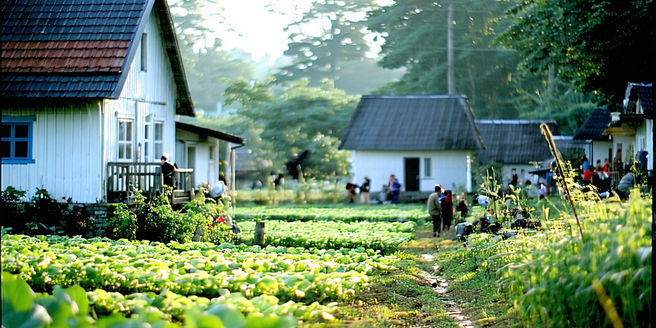What is a Community Land Trust?
A Community Land Trust (CLT) is a non-profit organization designed to acquire and manage land for the benefit of a community. Unlike traditional land ownership, where land is individually owned, CLTs hold land as a community asset, separate from buildings. This model allows for permanent affordability in housing as the land remains in the trust, preventing price spikes due to market speculation. Importantly, this approach also fosters a sense of shared responsibility and communal well-being among residents. Homeowners lease land from the CLT, ensuring stability and affordability. By focusing on community control, CLTs aim to empower local residents and promote equitable development practices. The model aligns with broader goals of sustainability and community resilience, addressing housing accessibility in rapidly urbanizing areas.
The History and Origins of Community Land Trusts
The concept of Community Land Trusts has roots in social justice and land reform movements. Originating in the United States during the Civil Rights Movement, the first modern CLT was established in 1969 in Albany, Georgia, called New Communities Inc. It was inspired by a vision of collective land ownership to support African American farmers and rural communities. The idea was to create a framework where land could be shared, providing stable and affordable access to land for housing and agriculture. Over the decades, the CLT model has gained prominence worldwide, adapted by communities seeking to balance property rights with community benefits, aiming to create equitable and sustainable urban and rural environments.
How Community Land Trusts Operate
Community Land Trusts operate by acquiring land and then holding it in trust for community use. The land is typically removed from the speculative market, ensuring long-term affordability by separating land ownership from housing. One of the main advantages of this model is that it promotes economic stability for the residents. Homeowners on CLT land own their buildings and lease the land beneath for a small fee. This reduces land costs, making homeownership attainable for low to moderate-income families. CLTs have democratic governance structures, often involving residents in decision-making processes. This collective management ensures that the community’s needs and goals are prioritized. With a mission rooted in stewardship, CLTs maintain affordable housing, foster community development, and provide educational resources.
Benefits of Community Land Trusts for Local Communities
Community Land Trusts offer numerous benefits to local communities. Primarily, they ensure long-term affordable housing, making homeownership accessible to a broader demographic. By stabilizing housing costs, CLTs protect against displacement, allowing communities to thrive without the threat of gentrification. Moreover, such initiatives help in building strong, inclusive neighborhoods by promoting diverse community interaction. They foster community cohesion and empowerment, as residents have a direct say in housing policy and land use decisions. CLTs also promote economic stability, as affordable housing allows residents to invest in their own communities. Additionally, CLTs support environmental sustainability by managing land use practices that emphasize green space and ecological preservation. These benefits contribute to healthier, more resilient communities.
Challenges and Future Outlook for Community Land Trusts
While Community Land Trusts provide promising solutions for affordable housing, they face challenges. Access to funding for land acquisition is a significant hurdle, as CLTs rely on grants and public subsidies. Political and market pressures can also impede their growth, as can local resistance to the CLT model due to misunderstandings. Engaging local communities and stakeholders can help mitigate resistance and foster better understanding. Despite these challenges, the future of CLTs remains optimistic. With increasing recognition of their value in combating housing crises, support from municipalities and philanthropic organizations is growing. Advocacy and education continue to play essential roles in expanding the model. By overcoming institutional barriers, CLTs can reshape the housing landscape, promoting accessibility and community resilience.



